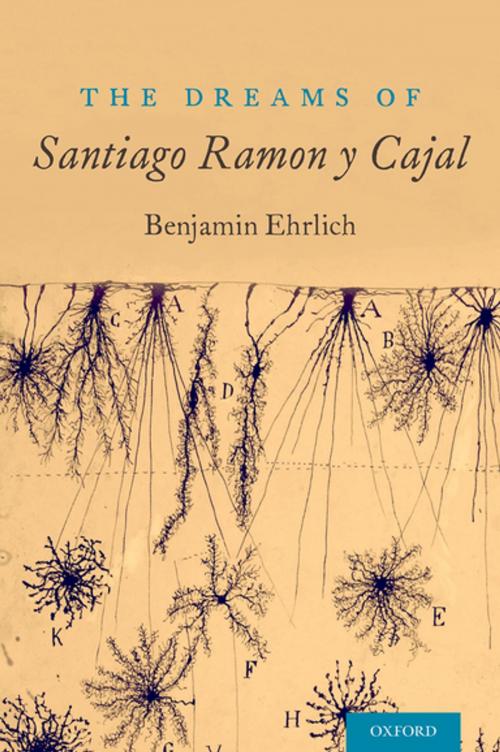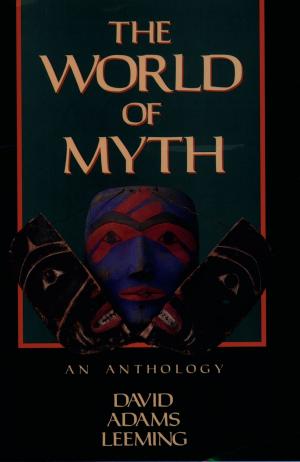The Dreams of Santiago Ramón y Cajal
Nonfiction, Health & Well Being, Medical, Specialties, Internal Medicine, Neuroscience, Neurology| Author: | Benjamin Ehrlich | ISBN: | 9780190619633 |
| Publisher: | Oxford University Press | Publication: | November 15, 2016 |
| Imprint: | Oxford University Press | Language: | English |
| Author: | Benjamin Ehrlich |
| ISBN: | 9780190619633 |
| Publisher: | Oxford University Press |
| Publication: | November 15, 2016 |
| Imprint: | Oxford University Press |
| Language: | English |
The Spanish anatomist Santiago Ramón y Cajal (1852-1934) explored the microscopic world of the brain and found a landscape inhabited by distinctly individual cells, later termed neurons. "The mysterious butterflies of the soul," he called them, "whose beating of wings may one day reveal to us the secrets of the mind." Although he ranks among the greatest scientists in history, the name of the Nobel Prize-winning "father of modern neuroscience" is not as well-known as that of Darwin, Pasteur, Galileo, Einstein, Copernicus, and Isaac Newton. The second half of the nineteenth century saw a revolution in the study of the mind. Cajal was a contemporary of Sigmund Freud (1856-1939), whose radical theories would scandalize the next century. Before he was a neuroanatomist Cajal conducted psychiatric experiments and before Freud became a psychiatrist, he worked in neuroanatomy. In public, Cajal spoke respectfully about Freud, but in private, Cajal rejected the man and his theories. In order to disprove Freud's "lies," Cajal started to record his own dreams in a diary, part of a notably personal book project, which he worked on from 1918 until his death in 1934. For reasons unknown, Cajal never published this work. Until recently, it was assumed that the manuscript had been destroyed during the Spanish Civil War. The Dreams of Santiago Ramón y Cajal is this lost dream diary, translated into English for the first time. The text is accompanied by an introduction to the life and work of Cajal, his relationship with the famed Viennese psychoanalyst, and the historical context surrounding the contributions of two great dueling intellects.
The Spanish anatomist Santiago Ramón y Cajal (1852-1934) explored the microscopic world of the brain and found a landscape inhabited by distinctly individual cells, later termed neurons. "The mysterious butterflies of the soul," he called them, "whose beating of wings may one day reveal to us the secrets of the mind." Although he ranks among the greatest scientists in history, the name of the Nobel Prize-winning "father of modern neuroscience" is not as well-known as that of Darwin, Pasteur, Galileo, Einstein, Copernicus, and Isaac Newton. The second half of the nineteenth century saw a revolution in the study of the mind. Cajal was a contemporary of Sigmund Freud (1856-1939), whose radical theories would scandalize the next century. Before he was a neuroanatomist Cajal conducted psychiatric experiments and before Freud became a psychiatrist, he worked in neuroanatomy. In public, Cajal spoke respectfully about Freud, but in private, Cajal rejected the man and his theories. In order to disprove Freud's "lies," Cajal started to record his own dreams in a diary, part of a notably personal book project, which he worked on from 1918 until his death in 1934. For reasons unknown, Cajal never published this work. Until recently, it was assumed that the manuscript had been destroyed during the Spanish Civil War. The Dreams of Santiago Ramón y Cajal is this lost dream diary, translated into English for the first time. The text is accompanied by an introduction to the life and work of Cajal, his relationship with the famed Viennese psychoanalyst, and the historical context surrounding the contributions of two great dueling intellects.















